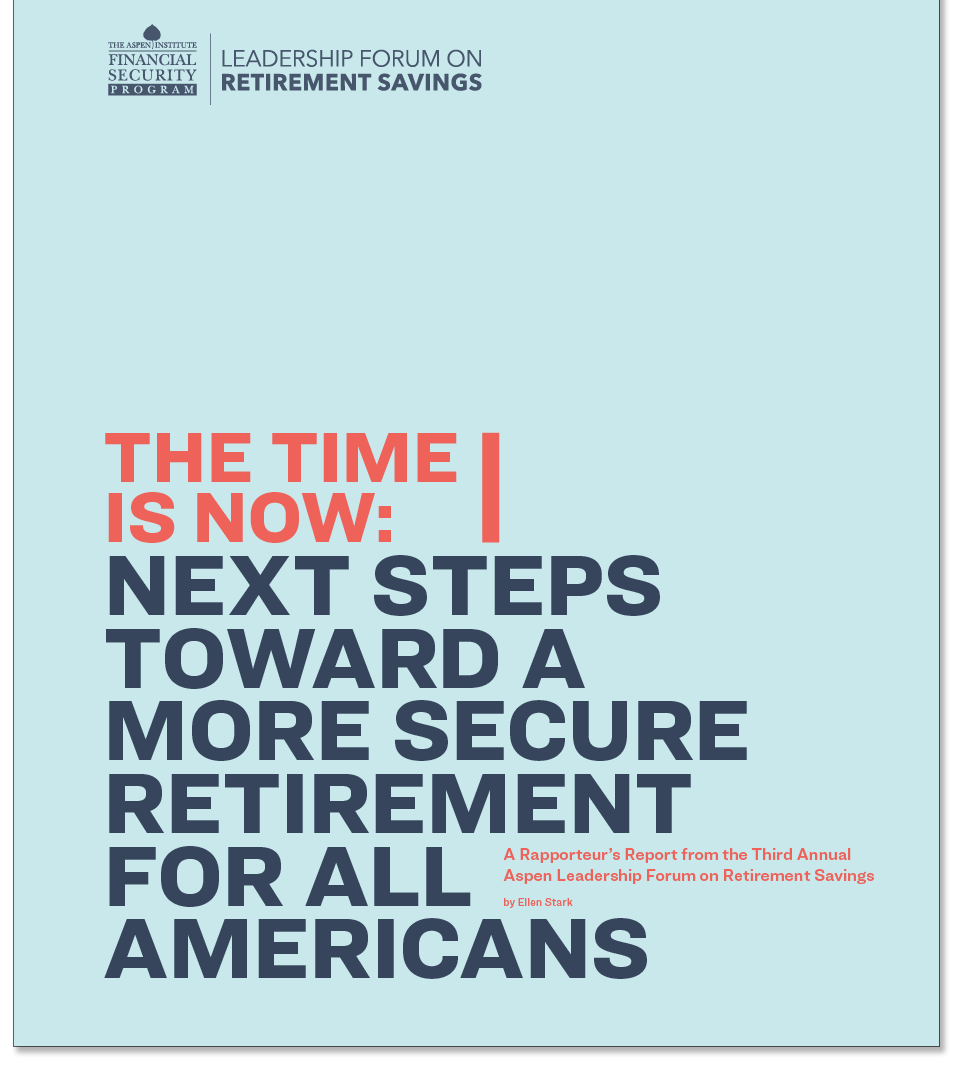Even after a decade of economic growth, the retirement outlook for many Americans remains precarious at best. By one estimate, half of working-age Americans are at risk of not being able to maintain their standard of living when—or if—they stop working.
Spurred by this reality, the Aspen Institute Financial Security Program convened its third annual Leadership Forum on Retirement Savings in April. More than 70 experts and industry leaders gathered in Warrenton, Va., to share, evaluate, and refine solutions to the nation’s retirement crisis.
By Forum’s end, participants had identified five ideas most ready for advancement:
- Expand mandated savings programs that are already testing successfully. California, Illinois, and Oregon now require most employers to enroll workers in a company retirement plan or state-sponsored IRA through payroll deductions. Positive early results are driving momentum for wider implementation.
- Expand saving options for short-term emergencies. Many American families are one bill away from serious money troubles, and the absence of any financial cushion makes long-term saving more difficult. Pairing a short-term savings plan with a workplace retirement plan is currently showing promise in marketplace testing, but more regulatory guidance is called for.
- Create more alternatives to retirement plans tied to a single employer. Too many Americans are shut out of the employer-based retirement system because their company has no plan or they are self-employed. Making it easier for small companies to jointly offer retirement plans could expand coverage, but regulators must protect consumers even as they foster a marketplace that attracts financial services companies.
- Develop retirement products and policies that account for increased longevity. Annuity-shy consumers could be won back by lifetime income products that offer more flexibility and control.
- Make it easier to track and roll over accounts when switching jobs to stem retirement plan leakage. Between 33–47 percent of plan participants withdraw part or all of their retirement plan assets following a job change, with the lost savings amounting to between $60 billion and $105 billion per year. Decoupling retirement plans from individual employers could alleviate job-change-induced leakage. So might a universal registry system, a third-party clearinghouse that facilitates transfers, and auto-portability.
For more information on how experts believe each of these strategies could bolster the financial security in America, download the full report and reach out to our staff.
SHARE
New from #AspenRSI | The Time is Now: Next Steps Toward a More Secure Retirement for All Americans
Explore insights from more than 70 experts as they gathered to share, evaluate, and refine solutions to the nation’s retirement crisis. https://buff.ly/2BuUv5N![]()


